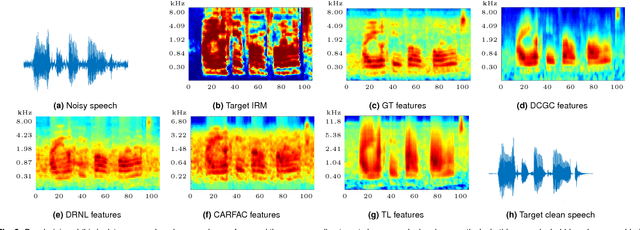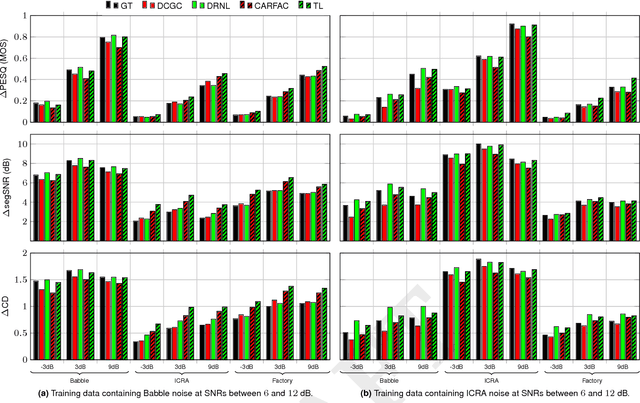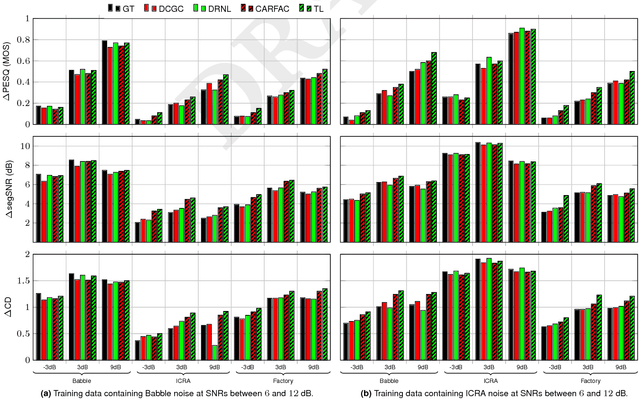Machines hear better when they have ears
Paper and Code
Jun 05, 2018



Deep-neural-network (DNN) based noise suppression systems yield significant improvements over conventional approaches such as spectral subtraction and non-negative matrix factorization, but do not generalize well to noise conditions they were not trained for. In comparison to DNNs, humans show remarkable noise suppression capabilities that yield successful speech intelligibility under various adverse listening conditions and negative signal-to-noise ratios (SNRs). Motivated by the excellent human performance, this paper explores whether numerical models that simulate human cochlear signal processing can be combined with DNNs to improve the robustness of DNN based noise suppression systems. Five cochlear models were coupled to fully-connected and recurrent NN-based noise suppression systems and were trained and evaluated for a variety of noise conditions using objective metrics: perceptual speech quality (PESQ), segmental SNR and cepstral distance. The simulations show that biophysically-inspired cochlear models improve the generalizability of DNN-based noise suppression systems for unseen noise and negative SNRs. This approach thus leads to robust noise suppression systems that are less sensitive to the noise type and noise level. Because cochlear models capture the intrinsic nonlinearities and dynamics of peripheral auditory processing, it is shown here that accounting for their deterministic signal processing improves machine hearing and avoids overtraining of multi-layer DNNs. We hence conclude that machines hear better when realistic cochlear models are used at the input of DNNs.
 Add to Chrome
Add to Chrome Add to Firefox
Add to Firefox Add to Edge
Add to Edge